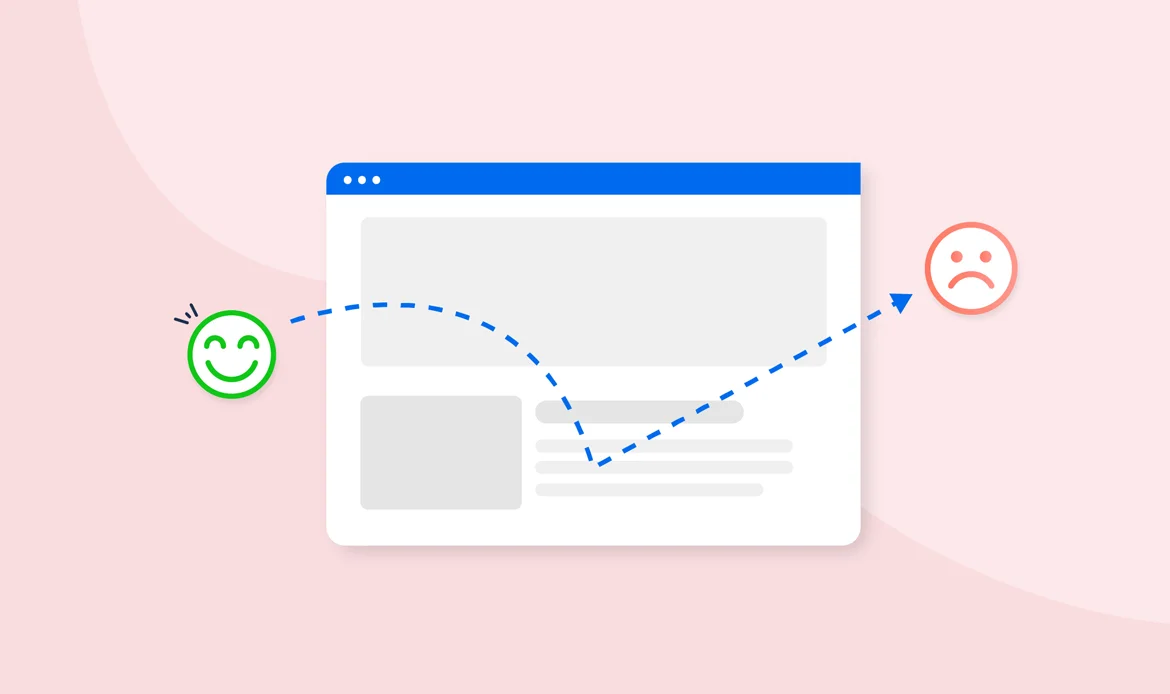In the vast digital landscape, the realms of User Experience (UX) and Search Engine Optimization (SEO) hold unparalleled significance in shaping the success and visibility of a website. While UX revolves around crafting an immersive and delightful journey for users, SEO aims to propel a website to the top echelons of search engine rankings. But did you know that these two critical domains are not just parallel paths but are intricately intertwined, influencing each other in profound ways? Welcome to our article, where we embark on an enlightening exploration of “UX Affects SEO: 15 Terms to Know.”
In this digital era, a mere online presence is not enough to captivate users or allure search engines. Websites must embrace a harmonious marriage of UX and SEO strategies to stand out in a competitive landscape. With each passing day, the algorithms that govern search engine rankings become more sophisticated, and user expectations continue to soar to unprecedented heights. To navigate these dynamic waters, website owners and digital marketers must grasp the core concepts that bridge the gap between UX and SEO.
So, fasten your seatbelts as we embark on this enlightening journey, where we uncover the 15 essential terms that illuminate how UX significantly influences SEO outcomes. From bounce rates to mobile-friendliness, and from user engagement to content structure, we will delve deep into the pivotal elements that pave the way to digital success.
Understanding the Connection Between User Experience and SEO Performance
What is Google Ranking?
Google Ranking refers to the position of a web page in the search results pages of Google in response to a user’s search query. When someone enters a search term or keyword into Google’s search box, the search engine algorithm evaluates and ranks various web pages based on their relevance and authority in relation to the entered query.
The goal of Google’s ranking algorithm is to provide the most relevant and valuable information to the user. Pages that are deemed to have high-quality content, relevant to the search query, and trusted by users tend to rank higher in the search results.
The ranking of web pages on Google is crucial for website owners, businesses, and marketers, as higher rankings lead to increased visibility and organic traffic to their websites. Websites that appear on the first page of Google’s search results are generally more likely to receive clicks and visitors compared to those that appear on subsequent pages.
Various factors influence Google’s ranking algorithm, including keyword relevance, website authority, backlinks, user engagement metrics, page loading speed, mobile-friendliness, and more. Google continually updates its algorithm to improve search results and prevent manipulation, which means that website owners need to adapt their SEO strategies to maintain or improve their rankings over time.
1. Bounce Rate

Bounce rate is a critical metric that serves as a bridge between User Experience (UX) and Search Engine Optimization (SEO). It represents the percentage of visitors who land on a webpage and then leave without interacting further or exploring other pages on the same site. A high bounce rate can indicate that users are dissatisfied with the content or experience offered, leading to potential negative consequences for both UX and SEO.
From a UX perspective, a high bounce rate suggests that the webpage fails to meet users’ expectations, resulting in a lack of engagement and a negative impression. This may be caused by factors like slow loading times, unappealing design, or irrelevant content.
In terms of SEO, search engines interpret a high bounce rate as an indicator that the webpage may not be providing relevant or valuable information to users. Consequently, the search engine may rank the page lower in search results, making it less visible to potential visitors.
To maintain a healthy balance between UX and SEO, it is crucial to reduce bounce rates. This can be achieved through strategies such as improving content quality, optimizing page load speeds, enhancing website design, and providing better navigation.
By understanding and addressing bounce rate as a key UX and SEO metric, website owners can create a more engaging and user-friendly online presence that resonates with both users and search engines, ultimately driving higher rankings and increased user satisfaction.
2. Dwell Time

In the intricate dance of digital success, “Dwell Time” emerges as a significant metric that bridges the gap between User Experience (UX) and Search Engine Optimization (SEO). Dwell time refers to the amount of time users spend on a webpage after clicking through from search engine results.
A longer dwell time signifies that users find the content engaging, relevant, and valuable. It reflects the level of satisfaction users experience while exploring the webpage. From a UX perspective, a longer dwell time indicates that the webpage fulfills users’ needs, encouraging them to stay longer and delve deeper into the site’s offerings.
Dwell time is not only a reflection of positive user experience but also a crucial factor in SEO. Search engines interpret longer dwell times as an indication that the webpage provides valuable information, leading to better rankings. It signifies that users are finding what they sought, reinforcing the credibility and authority of the content.
To optimize dwell time and enhance the synergy between UX and SEO, website owners must focus on creating high-quality, engaging content that meets users’ expectations. This includes crafting compelling headlines, informative articles, captivating visuals, and easy navigation to keep users hooked.
By understanding the impact of dwell time and leveraging it effectively, websites can establish a harmonious connection between user satisfaction and search engine rankings, ultimately driving organic traffic and elevating their online presence.
3. Click-Through Rate (CTR)

In the captivating world where User Experience (UX) intertwines with Search Engine Optimization (SEO), “Click-Through Rate (CTR)” emerges as a vital metric that shapes the fate of a website’s success. CTR represents the percentage of users who click on a website link in the search results after viewing it.
A high CTR signifies that the webpage’s title and meta description are compelling and relevant to users, enticing them to explore further. This metric acts as a barometer of user interest and content resonance. From a UX perspective, a higher CTR suggests that the website’s appearance in search results is appealing and intriguing, drawing users in to discover more.
CTR holds immense significance in SEO as well. Search engines interpret a higher CTR as a signal of content quality and relevance, influencing the website’s ranking in search results. A website with a higher CTR is deemed more valuable and trustworthy, leading to improved visibility and organic traffic.
4. Mobile-Friendly

Mobile-Friendly is a key concept in the intersection of user experience and SEO, as it impacts a website’s visibility and rankings in mobile search results by catering to the preferences and habits of mobile users. Ensuring a mobile-friendly design is essential for any website looking to improve its search engine performance and overall user satisfaction.
A mobile-friendly website is designed to adapt seamlessly to smaller screens, offering easy navigation, readable content, and intuitive interactions that cater to mobile users’ needs. Search engines, particularly Google, consider mobile-friendliness as a critical ranking factor in their search results.
Websites that are mobile-friendly are more likely to rank higher in mobile searches, as Google prioritizes delivering the best user experience to its mobile users. This is especially important in the current digital landscape, where the majority of internet users access websites via their mobile devices.
5. Page Load Speed

Page Load Speed refers to the time it takes for a web page to fully load and become visible to the user after they click on a link or enter a URL in their web browser. In the context of the article “UX Affects SEO: 15 Terms to Know,” page load speed is a critical factor that significantly impacts both user experience (UX) and search engine optimization (SEO) performance.
A fast page load speed is crucial for providing a positive user experience. Users expect websites to load quickly, and if a page takes too long to load, they may become frustrated and abandon the site. Slow page load speeds can lead to higher bounce rates, lower user engagement, and a negative perception of the website.
From an SEO perspective, search engines, particularly Google, consider page load speed as an essential ranking factor. Google’s algorithms prioritize websites that offer a fast and smooth user experience. Websites with slow loading times may experience a drop in search rankings, making it harder for potential visitors to find them through search engine queries.
6. Site Architecture

Site Architecture refers to the hierarchical structure and organization of a website’s content, pages, and navigation. Site architecture plays a crucial role in both user experience (UX) and search engine optimization (SEO) strategies.
A well-designed site architecture is essential for providing a seamless and intuitive user experience. It involves arranging website content in a logical and user-friendly manner, making it easy for visitors to find what they are looking for. Clear and straightforward navigation, along with well-defined categories and subcategories, helps users navigate the site efficiently, reducing the chances of getting lost or frustrated.
From an SEO perspective, site architecture directly influences how search engine crawlers discover and index web pages. A well-structured site allows search engines to understand the website’s content better, making it easier for them to rank relevant pages in search results. A strong site architecture with proper internal linking can also help distribute authority and page rank throughout the site, benefiting SEO efforts.
7. Readability and Content Structure

Readability and Content Structure refer to two crucial aspects of a website’s content that directly impact user experience (UX) and search engine optimization (SEO). In the context of the article “UX Affects SEO: 15 Terms to Know,” paying attention to readability and content structure is essential for creating engaging and user-friendly web pages.
Readability focuses on how easily visitors can read and comprehend the content on a web page. This involves using clear and concise language, appropriate font sizes and styles, sufficient line spacing, and breaking up the text into paragraphs and sections. Ensuring good readability enhances the overall user experience, as visitors can quickly grasp the information without feeling overwhelmed or confused.
Content structure refers to the organization and presentation of the content on a web page. A well-structured content layout is essential for guiding users through the information in a logical and coherent manner. Proper use of headings, subheadings, bullet points, and numbered lists helps users scan the content and find the information they need more efficiently.
8. Relevant and High-Quality Content

Relevant and High-Quality Content is a fundamental concept that significantly influences both user experience (UX) and search engine optimization (SEO) strategies. In the context of the article “UX Affects SEO: 15 Terms to Know,” creating relevant and high-quality content is essential for the success of a website.
Relevant content is information that directly addresses the needs and interests of the website’s target audience. It should align with the users’ search intent and provide valuable insights, answers, or solutions. By offering content that resonates with visitors, a website can enhance user satisfaction and engagement.
High-quality content goes beyond relevance; it also encompasses accuracy, reliability, and credibility. Content should be well-researched, well-written, and free from grammatical errors. Providing authoritative and trustworthy information establishes the website as a reliable source of knowledge and builds trust with users.
9. Internal Linking
Internal Linking is a vital aspect of website design that influences both user experience (UX) and search engine optimization (SEO) efforts. In the context of the article “UX Affects SEO: 15 Terms to Know,” internal linking refers to the practice of connecting different pages or content within a website through hyperlinks.
The primary purpose of internal linking is to improve navigation and information flow for website visitors. When users encounter relevant anchor text or clickable links within the content they are reading, they can easily access related or supporting information on other pages of the same website. This helps users find more valuable content, explore different topics, and spend more time engaging with the site.
From an SEO perspective, internal linking plays a crucial role in distributing “link juice” or authority throughout the website. When one page links to another within the same domain, it passes some of its SEO value to the linked page. Proper internal linking can help search engines discover and index content more efficiently, allowing them to recognize the website’s most valuable pages.
10. User Engagement

User Engagement is a critical metric that measures how actively and meaningfully visitors interact with a website’s content and features. In the context of the article “UX Affects SEO: 15 Terms to Know,” user engagement refers to the level of interest, involvement, and satisfaction exhibited by users while exploring a website.
Positive user engagement is a strong indicator of a website’s overall user experience (UX). When users find the content valuable, enjoyable, and easy to interact with, they are more likely to stay longer on the site, view multiple pages, and take desired actions such as filling out forms, making purchases, or leaving comments. These actions demonstrate a higher level of engagement, which often leads to increased brand loyalty and repeat visits.
11. Image and Video Optimization

Image and Video Optimization is a crucial practice that directly impacts both user experience (UX) and search engine optimization (SEO) for a website. In the context of the article “UX Affects SEO: 15 Terms to Know,” image and video optimization refer to the process of enhancing multimedia elements, such as images and videos, to improve website performance and user satisfaction.
For images, optimization involves reducing file sizes without compromising quality. Smaller image files load faster, contributing to improved page load speed and a smoother user experience. Additionally, using descriptive alt text for images is essential for accessibility and allows search engines to understand the content of the images, potentially improving the website’s visibility in image searches.
To optimize image and video content for both UX and SEO, website owners and developers should use appropriate image formats like JPEG or WebP, leverage lazy loading to defer off-screen images and videos from loading until they’re needed, and utilize content delivery networks (CDNs) for faster media delivery. By adopting these optimization techniques, websites can offer an enhanced user experience and potentially improve their search engine rankings and organic traffic.
12. Security and Trust

Security and Trust are essential factors that profoundly influence both user experience (UX) and search engine optimization (SEO) strategies for a website. In the context of the article “UX Affects SEO: 15 Terms to Know,” security and trust refer to measures taken to protect user data and establish confidence among visitors.
Website security involves implementing robust protocols and safeguards to protect user information from unauthorized access, data breaches, and cyberattacks. Users expect their personal data to be handled securely, especially when engaging in transactions or providing sensitive information. A secure website not only protects user data but also fosters a sense of trust and credibility.
To optimize security and trust for both UX and SEO, website owners should invest in robust security measures, such as HTTPS encryption, secure hosting, and regular security audits. Transparently communicating privacy policies and providing visible indications of trust can enhance the user experience and positively impact the website’s search engine rankings by establishing a safer and more credible online environment.
13. Voice Search Optimization
 Voice Search Optimization is a strategic approach aimed at improving a website’s visibility and relevance in voice-based search queries. Voice search optimization recognizes the increasing popularity of voice-activated assistants and devices, such as Siri, Google Assistant, and Amazon Alexa.
Voice Search Optimization is a strategic approach aimed at improving a website’s visibility and relevance in voice-based search queries. Voice search optimization recognizes the increasing popularity of voice-activated assistants and devices, such as Siri, Google Assistant, and Amazon Alexa.
As users increasingly adopt voice search to interact with technology, optimizing for voice queries becomes crucial for both user experience (UX) and search engine optimization (SEO). Voice searches often differ from traditional text-based searches in terms of phrasing and length, as users tend to use more natural language when speaking.
Voice search optimization enhances user experience by delivering quick and accurate answers to users’ queries. Websites that effectively cater to voice search queries are more likely to attract and retain users, as well as gain visibility in voice search results. By adapting to this emerging trend, website owners can not only improve their UX but also enhance their search engine rankings and overall digital presence.
14. Clickbait and Distracting Ads

Clickbait refers to misleading or sensationalized content used to lure users into clicking on a link, often leading to disappointing or irrelevant content. Distracting ads, on the other hand, are intrusive and disruptive advertisements that hinder users’ ability to access and consume the website’s content.
To optimize for both UX and SEO, website owners should avoid clickbait tactics and prioritize user-friendly ad placement. They should ensure that ads do not interfere with the main content, are relevant to users, and are not overly intrusive. By providing a seamless and positive user experience, websites can foster user engagement, improve search engine rankings, and maintain a loyal and satisfied audience.
15. Accessibility
Accessibility refers to the practice of designing and developing websites and digital content to be inclusive and usable by people with disabilities. In the context of the article UX Affects SEO 15 Terms to Know,”accessibility is a critical factor that significantly impacts both user experience (UX) and search engine optimization (SEO).
An accessible website ensures that all users, regardless of their abilities, can access, navigate, and interact with its content and features. This includes individuals with visual, hearing, motor, or cognitive impairments. Implementing accessibility features, such as alt text for images, captions for videos, keyboard navigation, and descriptive link text, ensures that users using assistive technologies can comprehend and interact with the content effectively.
Frequently Asked Questions About the Link Between UX and SEO
How does user experience impact search engine rankings?
User experience directly affects how long visitors stay on your website, how easily they navigate, and how quickly pages load. Search engines like Google consider these behavioral signals when determining rankings, rewarding sites that provide a smooth, engaging experience.
Which UX elements are most important for improving SEO?
Key UX elements that influence SEO include page speed, mobile responsiveness, clear navigation, readable content, and accessibility. These factors enhance user satisfaction and reduce bounce rates, both of which boost search engine visibility.
Why should I learn UX and SEO terminology together?
Understanding UX and SEO terms together helps you bridge design and optimization strategies effectively. It allows you to make informed decisions that enhance usability while aligning with SEO best practices, leading to better ranking and higher user engagement.
Conclusion
As we conclude our enlightening journey through the intertwined realms of User Experience (UX) and Search Engine Optimization (SEO), one thing becomes abundantly clear: the seamless fusion of these two critical components holds the key to digital triumph. The 15 terms we’ve explored shed light on the profound impact that UX exerts on SEO outcomes, and how understanding this synergy can elevate a website to new heights of success.
In the fast-paced digital landscape, where user expectations and search engine algorithms evolve constantly, staying ahead of the curve is imperative. The interplay between UX and SEO serves as a compass, guiding website owners and digital marketers towards creating platforms that effortlessly cater to user needs while capturing the attention of search engine crawlers.
From the first click to the final engagement, every step of the user’s journey leaves an indelible mark on the website’s search engine rankings. The significance of a low bounce rate, extended dwell time, and enticing click-through rates cannot be overstated, as they reflect the user’s satisfaction and search engines’ perception of content relevance.
Boost Your Rankings by Mastering UX & SEO Together!
Transform your online presence by combining the power of user experience (UX) and search engine optimization (SEO). Our premium WordPress themes are crafted to deliver lightning-fast performance, responsive layouts, and intuitive navigation—ensuring users stay longer and search engines rank you higher.


